While preparing for our trip to Africa Denise coerced me into watching “Out of Africa” with her, you know, for the scenery. Admittedly, the movie was not half as bad as I remember it. Having arrived in Nairobi, aka “Nairobbery,” we stayed two nights in the suburb of Karen, which is named after Karen Blixen (depicted by Meryl Streep in the movie) because the entire huge suburb was once her farm. We visited the house she had on that farm, which is now the Karen Blixen Museum. Part of the movie was filmed there, and part was filmed at another house she had, apparently, so it wasn’t totally familiar. I think it was worth visiting since we had seen the movie and it was very close to the place we stayed. Additionally, we went to the Nairobi National Museum, which was impressive for its stuffed native animals and birds; they had over 3,000 birds. Quickly overwhelmed by the bird room, we zeroed in on the very big or very colorful. In addition to birds and other critters, the museum holds five of the oldest human skulls ever found, all of which were found in Ethiopia and Kenya as this is where modern humans originated. Well worth the trip into Nairobi proper.
 The comprehensive but overwhelming bird room in the Nairobi National Museum
The comprehensive but overwhelming bird room in the Nairobi National Museum
From Nairobi, we went on a seven-day safari to three national parks: Masai Mara, Lake Nakuru and Amboseli, in that order. We learned that thankfully not all safaris are of the expensive and luxurious variety, so we camped out in rustic tented camps and went with a group of other travelers. In addition to saving a little coin, we felt we were “closer” to the experience with the animals as well as pretending, perhaps, that we were on a more rustic old time safari.
 The inside of our tent. The beds were very comfortable! You can see the opening to the private bathroom in the back.
The inside of our tent. The beds were very comfortable! You can see the opening to the private bathroom in the back.
The great migration, where the wildebeest, zebras and gazelles chase the rains and put on what is known as the greatest wildlife show on earth. It’s a show worth seeing and we recommend that you find out where the migration is to determine where to go on safari. It goes on all year as three million wildebeest, along with 300,000 zebras and a lesser number of gazelles, move between Tanzania’s Serengeti National Park to the south and Kenya’s Masai Mara National Park to the north in search of green grass to feed on.
The parks are separated by the fabled Mara River. The Mara River crossing has been made deservedly famous by National Geographic and is where the show gets very exciting. Here, hungry Nile crocodiles are added to the cast and wait for and claim more than a few of the crossing wildebeest at each of the two annual crossings. A horror show for the other hopeful members of the cast who emote trepidation while deciding whether crossing then and there is such a good idea. When we arrived we learned that the massive herd was still crossing into the Masai Mara from the Serengeti, so our timing was perfect.
Apparently the best luck one can have is to see a Mara River crossing. We can now appreciate how many days/weeks the National Geographic film crews must stay onsite to film the kind of massive crossings they have filmed. The animals don’t cross all at once, and they don’t cross constantly. They may not cross at all on any particular day, and depending on your safari schedule, you may only have one hour in one day where you are at the Mara River. Our guide told us that he had only seen one crossing before and he had been doing this for five years. We considered ourselves lucky in that we got to see a crossing of probably 200 animals. Nothing like the National Geographic documentaries, but exciting nonetheless.
 A few starting to cross. The zebras are much more anxious about crossing than the wildebeest.
A few starting to cross. The zebras are much more anxious about crossing than the wildebeest.
We saw everything we had hoped to see there: literally thousands of wildebeest and zebras, cheetahs (including an aborted hunt by two cheetahs because a safari guide distracted the hunters by starting their vehicle), gazelles, impala, lions, little baby lion cubs, cape buffalo, hippos, giraffes, elephants, crocodiles, jackals, mongoose, birds, a leopard in a tree, and one black rhino, which is the rarest of the big animals to see in the Mara because there are less than twenty left in the park and they tend to hide. At first, it was hard to believe we were not in some big zoo, because you just can’t comprehend that these strange and magnificent animals really do still live somewhere in the wild. The feeling we got when we first saw a herd of elephants, or an 18 foot tall giraffe, just walking across a distant plain is difficult to describe. We were just looking at them in wonder and awe, trying to convince our brains that this was real.
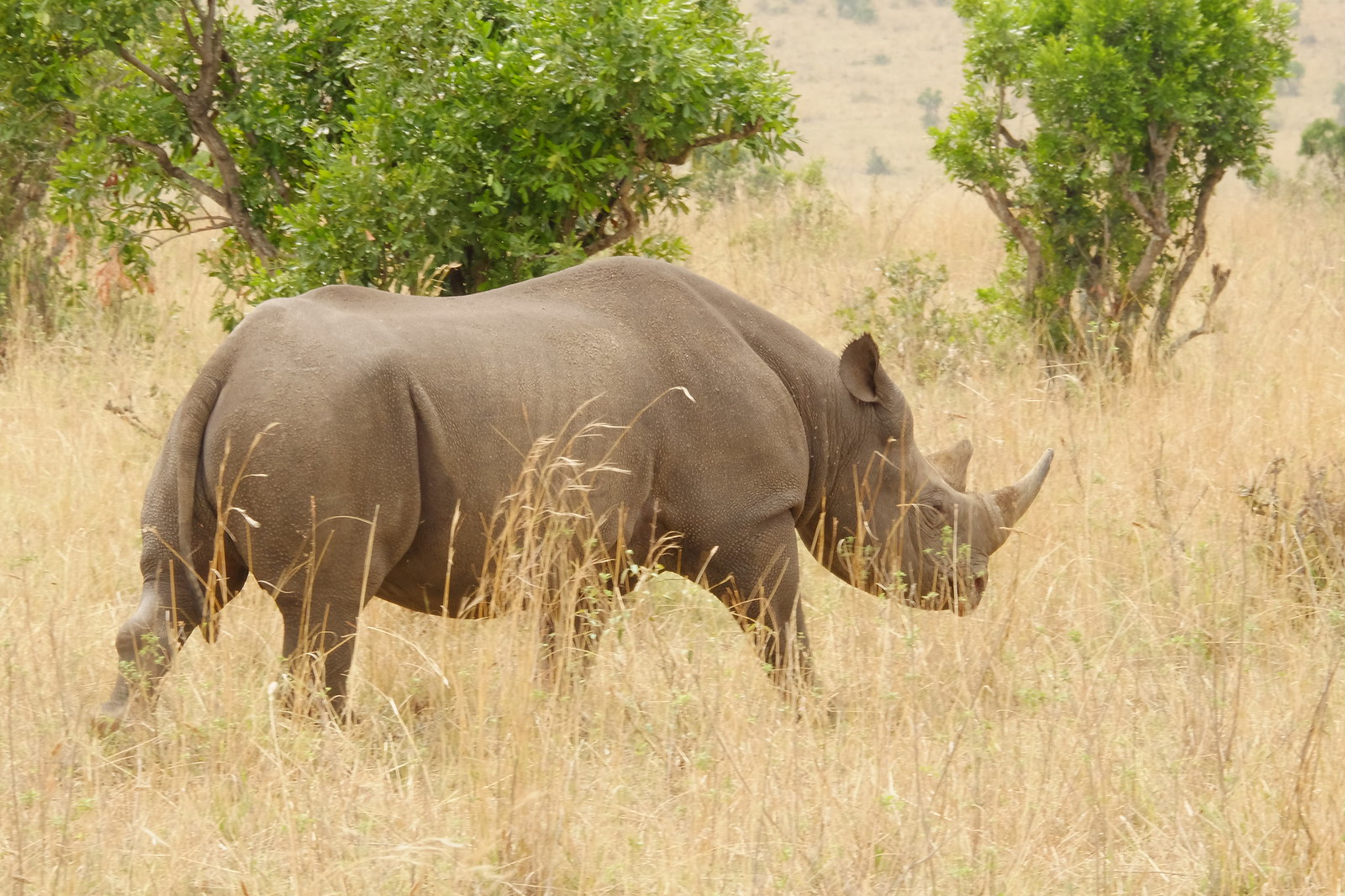 There are less than 20 black rhinos left in the Masai Mara and we got to see one. It walked right behind our vehicle when it crossed the road.
There are less than 20 black rhinos left in the Masai Mara and we got to see one. It walked right behind our vehicle when it crossed the road.
We took a walk one day toward one of the Masai villages that were always nearby our camps and after a short while we were joined by one of the Masai villagers who were in charge of security at the camp. We thought this was curious and asked if this were truly necessary. He assured us that it was and later showed us a plaque along the road that had been installed by an English university for a faculty member who had been killed right there by an elephant in 2000. He had apparently woken up very early to go take some photos and ended up memorialized by a plaque in Kenya. Yikes.
 The Masai are famous for their ability to jump.
The Masai are famous for their ability to jump.
After the Masai Mara, we went to Lake Nakuru National Park, where it is generally easier to see rhinos. We saw three white rhinos, which are not white, they are just a different species than the black rhinos, which are not black. Both rhino species are about the same color gray but have differently shaped heads and the white rhino is bigger than the black. We also saw a large group of olive baboons. Lake Nakuru is famous for its flamingos, but that marketing needs to be changed because the lake now has too little salt in it, so the flamingos have all moved to another lake.
We ended our safari at Amboseli National Park. Amboseli was really dry and dusty compared to the other parks, but it has one of the best views of Mount Kilimanjaro across the border in Tanzania. It also has a fantastic lake formed from the Kilimanjaro runoff which is a magnet for animals in the park. We saw several birds we hadn’t seen before, and several animals we already had, but now many were half submerged in the lake. Plus who can say they’ve seen too many hippopotamuses? …hippopotami?
A mad rush to get across the Mara River, Zebras are especially timid.
Black rhino
Giraffe fight!



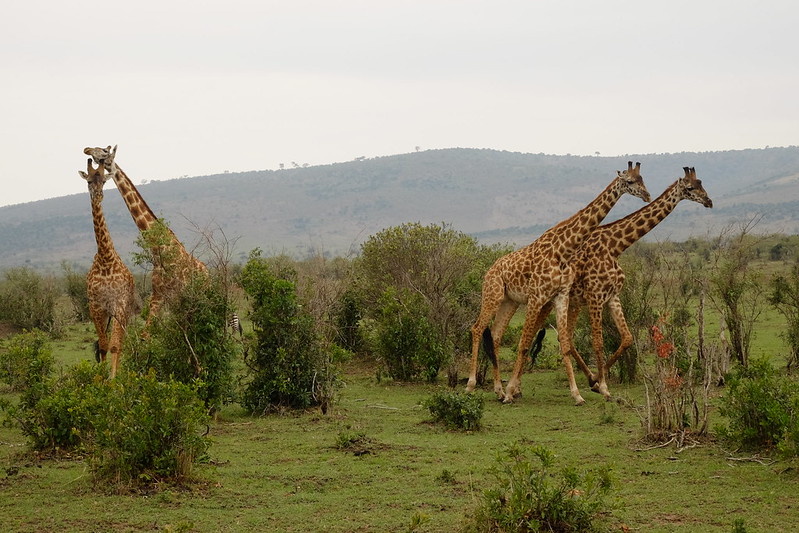

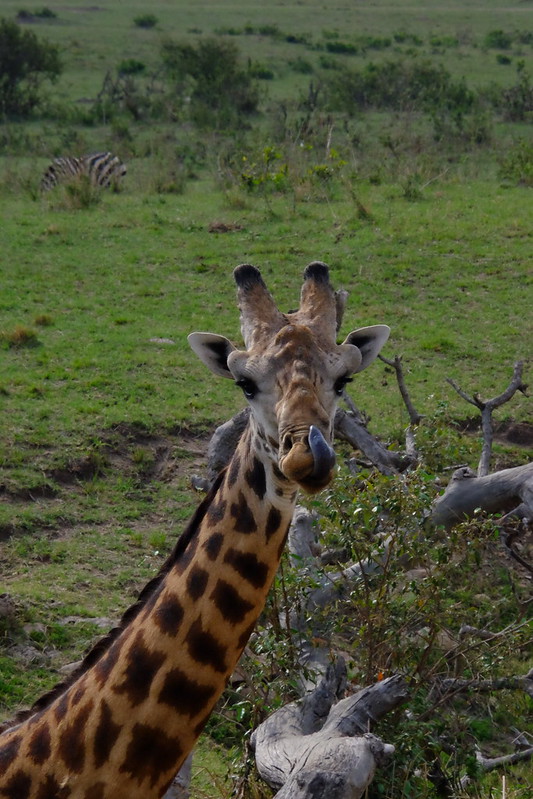

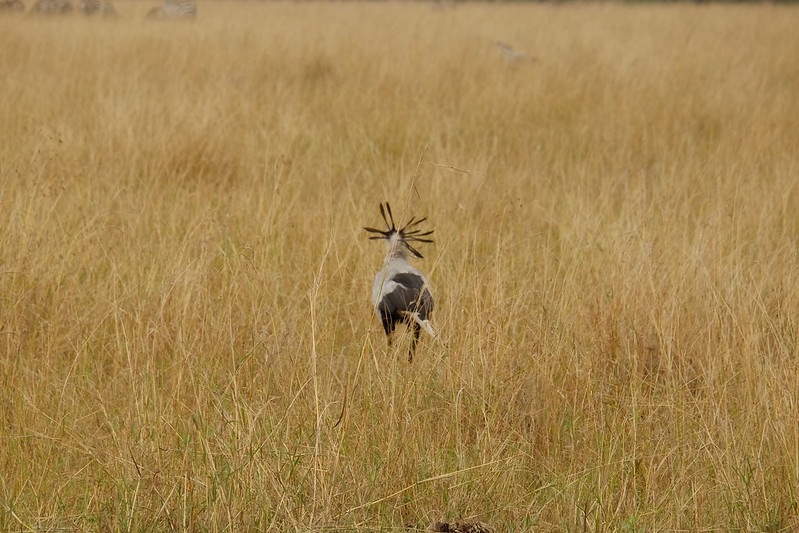
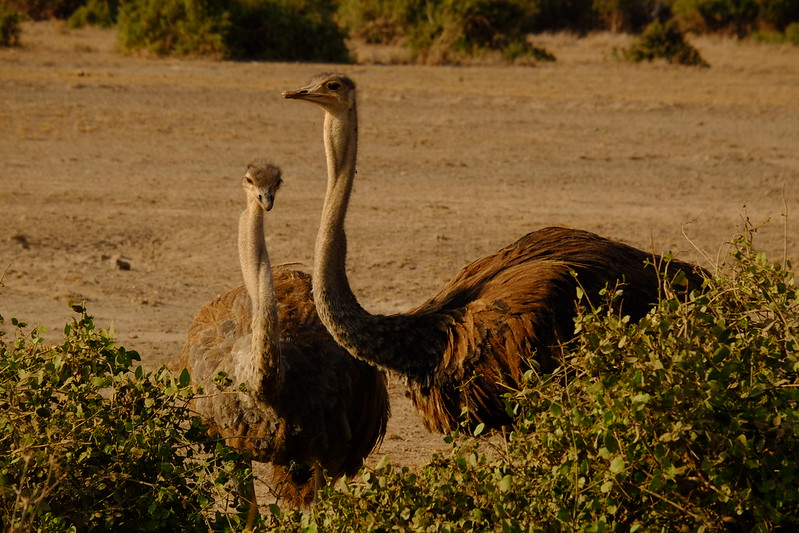


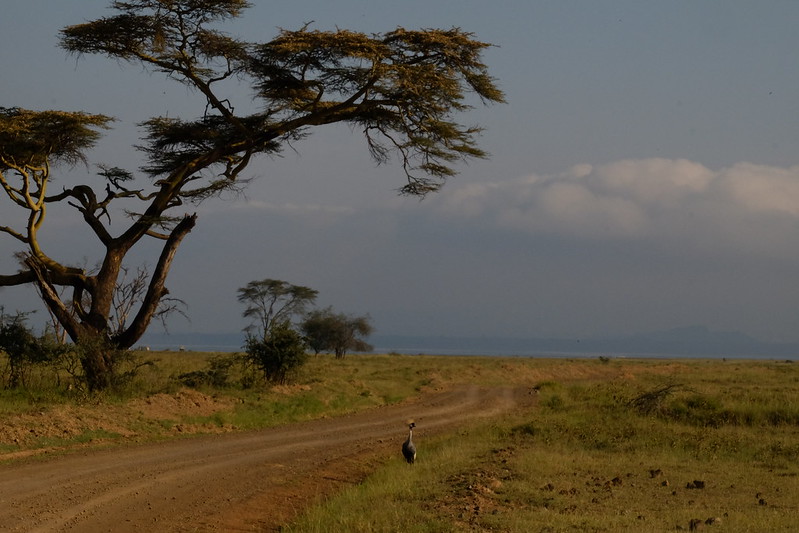



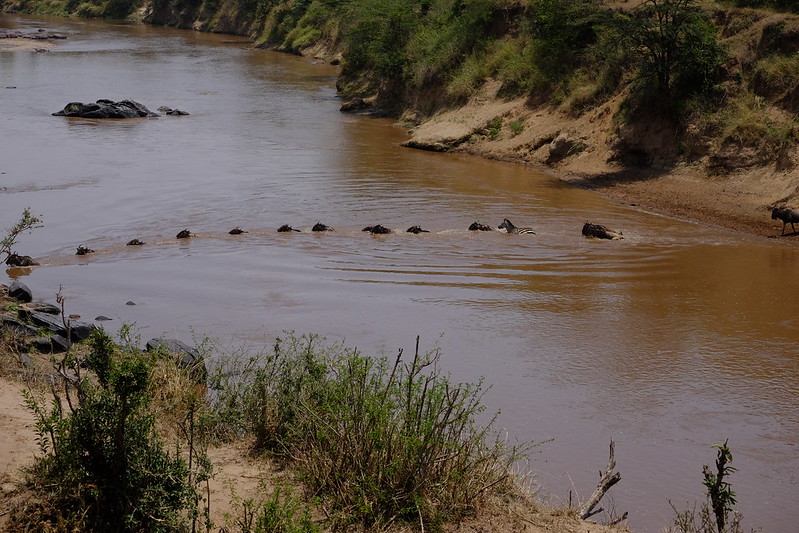

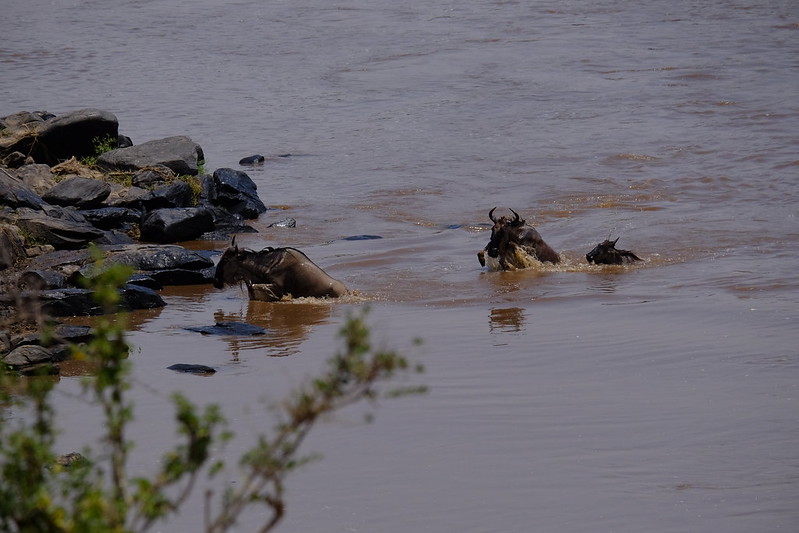



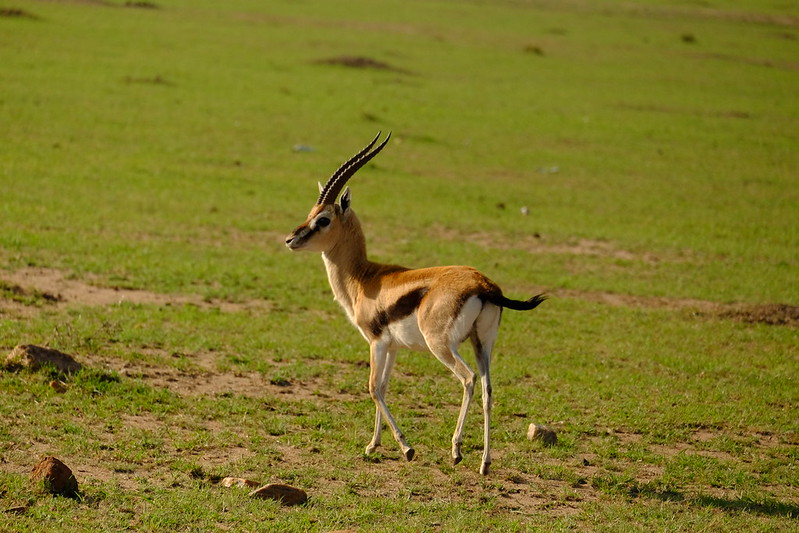





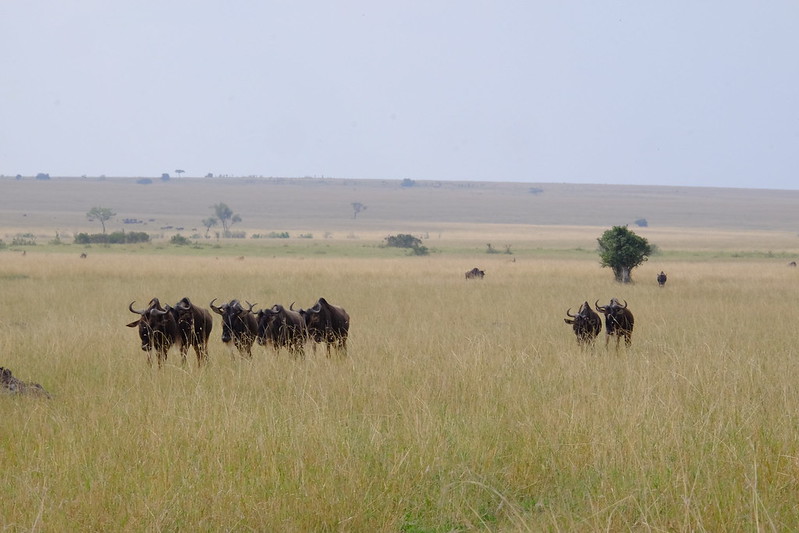

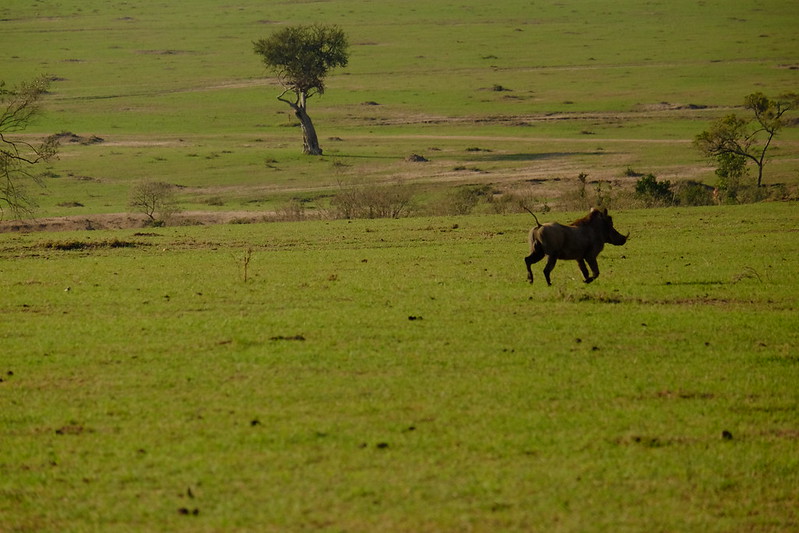
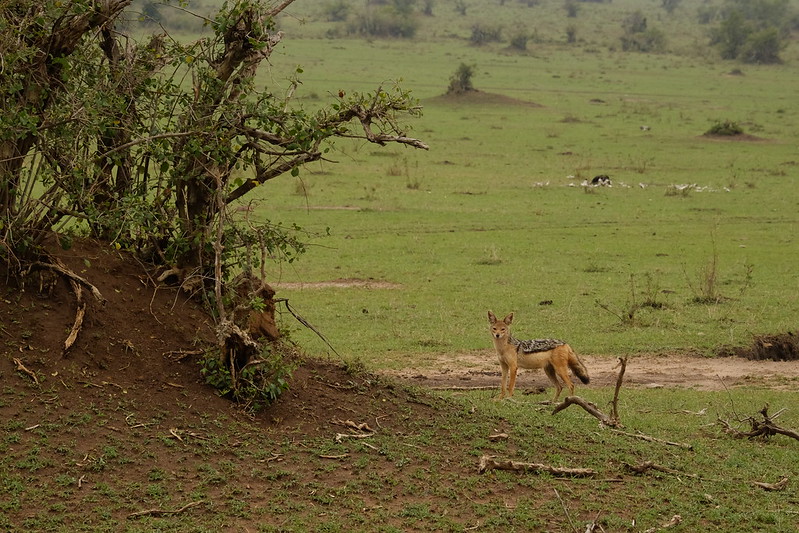









4 replies